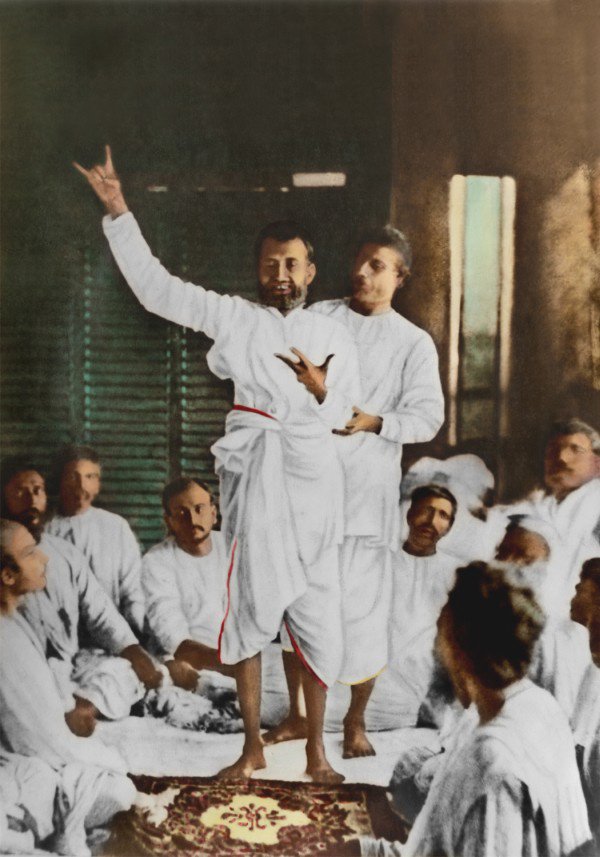In the realm of spiritual awakening and self-discovery, there exists a profound state of consciousness known as “samadhi.” This transcendent experience, deeply rooted in the ancient teachings of yoga and meditation, offers a gateway to inner peace and profound enlightenment. Join us on a journey as we explore the mysteries of samadhi, unearthing its essence, practices, and significance in the modern world.
What is Samadhi?
A Glimpse into Transcendence

Samadhi, a Sanskrit term, is a state of deep meditation where the individual transcends ordinary awareness and merges with the divine or universal consciousness. It is the pinnacle of self-realization, offering a profound sense of unity, serenity, and spiritual awakening. In this article, we will delve into the various dimensions of samadhi and how it can transform your life.
The Path to Samadhi
Embracing Meditation

Meditation is the key that unlocks the door to samadhi. By practising mindfulness, concentration, and breath control, individuals can gradually move closer to this transcendent state. It is a journey of self-discovery, a process that requires dedication and patience. Let’s explore some of the essential meditation techniques that pave the way to samadhi.
Yoga and Samadhi
Yoga, in its truest essence, is a path that leads to samadhi. The union of mind, body, and spirit is the foundation of this transformative practice. Discover the role of yoga in attaining samadhi and how various yoga postures and breathing exercises can facilitate this spiritual journey.
The Stages of Samadhi
Savikalpa Samadhi
Savikalpa Samadhi is a stage of samadhi where the meditator experiences a profound connection with the object of meditation while still maintaining a sense of individuality. It is a state of deep absorption and ecstasy, often accompanied by visions and a heightened awareness of the divine. In Savikalpa Samadhi, the distinction between the meditator and the object of meditation remains.
Nirvikalpa Samadhi
Nirvikalpa Samadhi is the next stage of samadhi, characterized by the complete dissolution of the individual ego and the merger with the divine. In this state, there is no duality, and the meditator experiences oneness with the universal consciousness. It is a state of pure bliss and profound spiritual awakening.
Dharmamegha Samadhi

Dharmamegha Samadhi, often referred to as the “cloud of dharma,” is a stage where the meditator gains deep insights into the nature of reality and existence. It is a state of wisdom and understanding, where the practitioner comprehends the interconnectedness of all things. Dharmamegha Samadhi is a bridge between the earlier stages of samadhi and the final stage of realization.
Sahaja Samadhi

Sahaja Samadhi is the ultimate stage of samadhi, representing a state of permanent, natural realization. In Sahaja Samadhi, the meditator seamlessly integrates the state of samadhi into everyday life. It is a continuous, unbroken state of self-realization, where the individual effortlessly embodies the wisdom and serenity gained through the previous stages.
Samadhi Experiences of Spiritual Masters

- Ramana Maharshi: Ramana Maharshi, a renowned sage, experienced a profound and extended period of samadhi at a young age. His realization occurred as he questioned the nature of the self. He remained in a state of continuous self-realization, offering guidance to countless seekers.
- Swami Sivananda: Swami Sivananda, a prominent yogi and spiritual teacher, had deep samadhi experiences during his spiritual journey. His devotion, selfless service, and unwavering discipline led him to attain higher states of consciousness.
- Swami Vivekananda: Swami Vivekananda, a disciple of Ramakrishna Paramhansa, had transcendent experiences of samadhi. His experiences fueled his mission to spread the teachings of Vedanta and yoga to the West.
- Ramakrishna Paramhansa: Ramakrishna Paramhansa, a mystic and spiritual teacher, had numerous samadhi experiences, often in the company of his beloved deity, Kali. His experiences were marked by intense ecstasy and divine communion.
- Krishna Gopi: Krishna Gopi, an ordinary individual with an extraordinary spiritual journey, achieved samadhi through dedicated practice and devotion. His experiences serve as a testament to the accessibility of samadhi to earnest seekers.
Achieving Samadhi

Daily Spiritual Practice
To attain samadhi, a daily spiritual practice is essential. This practice may include:
- Yogasana: Physical postures that prepare the body for meditation.
- Pranayama: Breath control techniques like Bhastrika and Tribandha Pranayama to calm the mind and vitalize the body.
- Omkar Chanting: Repetition of the sacred sound “Om” to attune to the universal consciousness.
- Ishta Mantra Chanting: The repetition of a personal, sacred mantra.
- Good Selfless Work: Engaging in selfless service to purify the mind and heart.
- Holistic Thinking: Embracing a holistic and compassionate perspective on life.
- Guru Bhakti Yoga: Devotion and surrender to a spiritual teacher for guidance.
- Reading Spiritual Scriptures: Studying texts like the Bhagavad Gita and Upanishads.
- Satsang of Spiritual Masters: Gathering with like-minded individuals and spiritual teachers for collective wisdom.
Khechari Mudra for Samadhi

Khechari Mudra, an advanced yogic practice, involves turning the tongue upward and backward to stimulate the ajna chakra. This powerful technique is believed to accelerate the journey to samadhi and unlock profound spiritual experiences. However, it should be learned under the guidance of an experienced yogi.
The Benefits of Samadhi
Mind, Body, and Soul
The practice of samadhi offers a myriad of benefits for individuals seeking holistic well-being. From reduced stress and anxiety to enhanced creativity and spiritual growth, the advantages of samadhi are boundless. Discover how this profound state can transform your life in ways you never imagined.
Samadhi in Modern Life
In a fast-paced, modern world, the pursuit of samadhi may seem challenging. However, integrating samadhi practices into daily life is not only possible but also highly beneficial. We will explore practical tips and techniques to incorporate samadhi into your routine, helping you find balance and serenity amidst the chaos.

Conclusion
In conclusion, samadhi is not just a state of meditation; it is a transformative journey towards self-realization and spiritual enlightenment. By practising meditation, and yoga, and embracing the stages of samadhi, individuals can experience the profound benefits it offers. In a world filled with chaos and distractions, samadhi is a beacon of inner peace and serenity.
FAQs
1. What is the ultimate Goal?
The ultimate goal of samadhi is to attain a state of profound meditation and spiritual awakening, transcending ordinary awareness and experiencing unity with the divine or universal consciousness.
2. How can I start my journey?
You can begin your journey to samadhi by practicing meditation, mindfulness, and yoga. It’s essential to commit to a regular practice and be patient with your progress.
3. What are the stages of samadhi?
The stages of samadhi include Savikalpa Samadhi, Nirvikalpa Samadhi, Dharmamegha Samadhi, and Sahaja Samadhi, each representing different levels of spiritual realization.
4. How can I integrate samadhi into my daily life?
To integrate samadhi into daily life, incorporate meditation, yoga, and other spiritual practices into your routine. Stay committed to your spiritual journey, and you will experience the benefits in your daily life.




